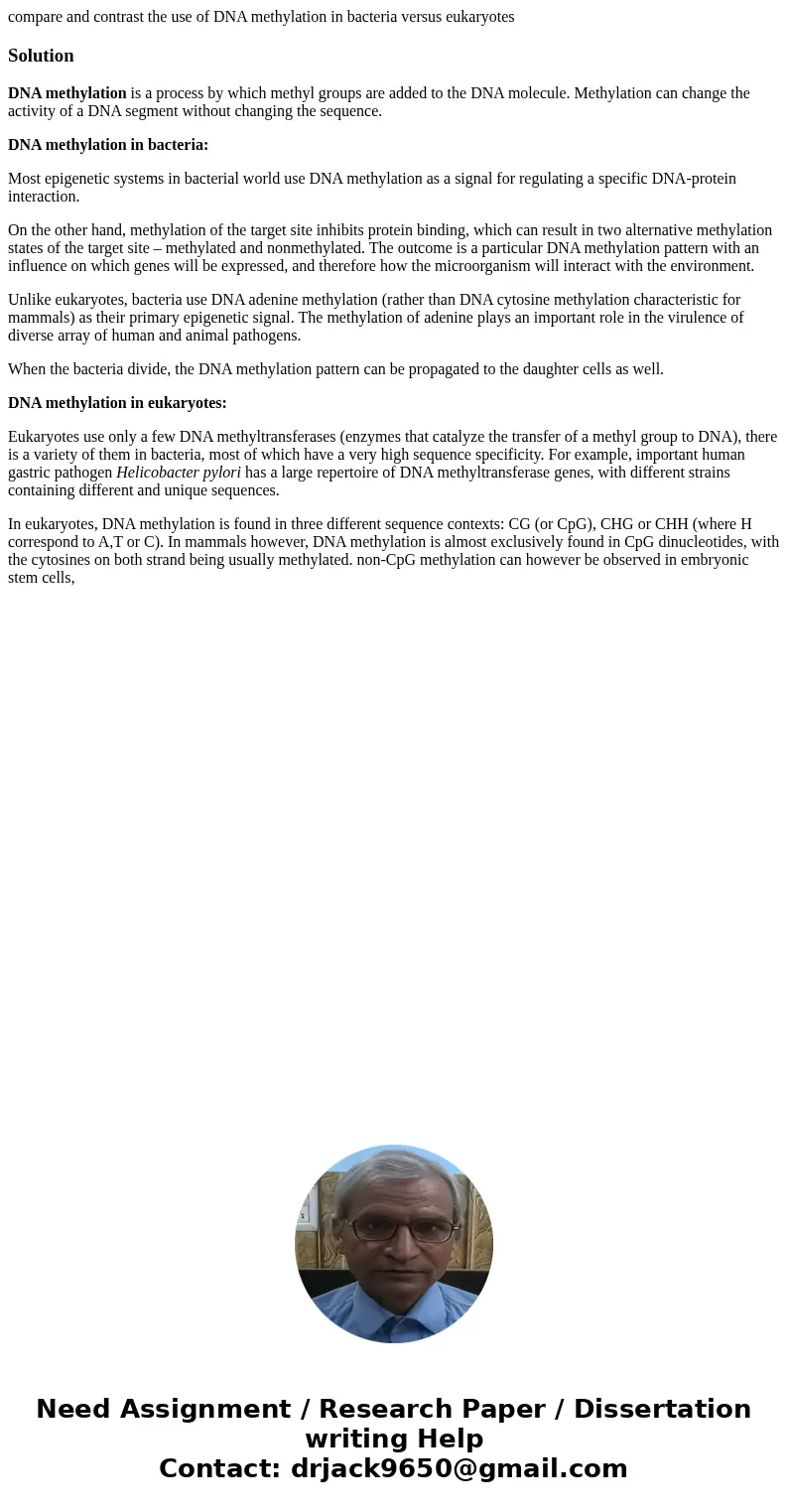compare and contrast the use of DNA methylation in bacteria
compare and contrast the use of DNA methylation in bacteria versus eukaryotes
Solution
DNA methylation is a process by which methyl groups are added to the DNA molecule. Methylation can change the activity of a DNA segment without changing the sequence.
DNA methylation in bacteria:
Most epigenetic systems in bacterial world use DNA methylation as a signal for regulating a specific DNA-protein interaction.
On the other hand, methylation of the target site inhibits protein binding, which can result in two alternative methylation states of the target site – methylated and nonmethylated. The outcome is a particular DNA methylation pattern with an influence on which genes will be expressed, and therefore how the microorganism will interact with the environment.
Unlike eukaryotes, bacteria use DNA adenine methylation (rather than DNA cytosine methylation characteristic for mammals) as their primary epigenetic signal. The methylation of adenine plays an important role in the virulence of diverse array of human and animal pathogens.
When the bacteria divide, the DNA methylation pattern can be propagated to the daughter cells as well.
DNA methylation in eukaryotes:
Eukaryotes use only a few DNA methyltransferases (enzymes that catalyze the transfer of a methyl group to DNA), there is a variety of them in bacteria, most of which have a very high sequence specificity. For example, important human gastric pathogen Helicobacter pylori has a large repertoire of DNA methyltransferase genes, with different strains containing different and unique sequences.
In eukaryotes, DNA methylation is found in three different sequence contexts: CG (or CpG), CHG or CHH (where H correspond to A,T or C). In mammals however, DNA methylation is almost exclusively found in CpG dinucleotides, with the cytosines on both strand being usually methylated. non-CpG methylation can however be observed in embryonic stem cells,

 Homework Sourse
Homework Sourse